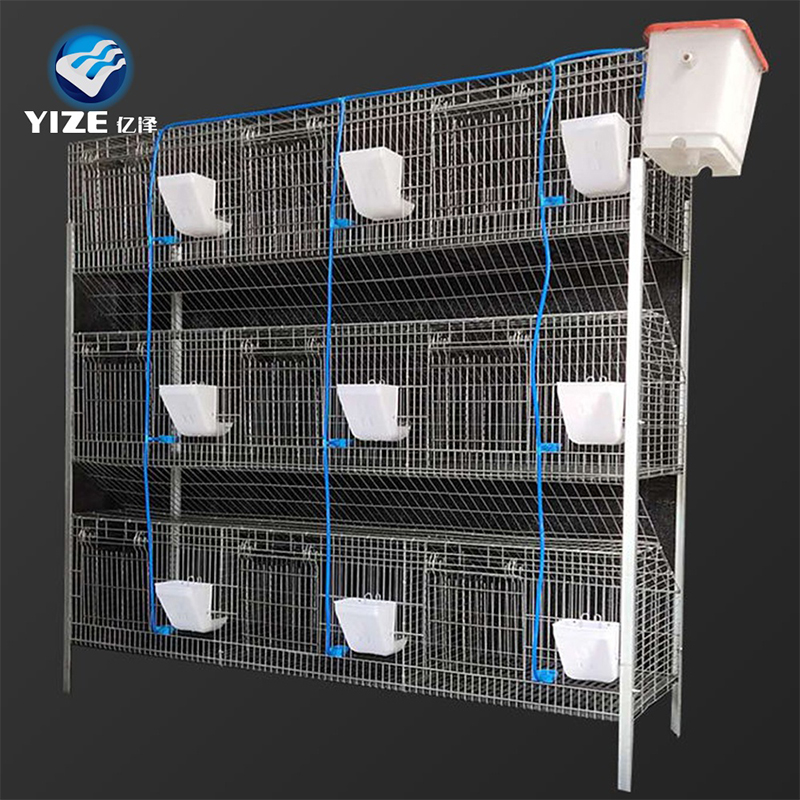Efficient and Affordable Solutions for Poultry Feed Pellet Production Equipment and Technology
Aug . 14, 2024 23:37 Back to list
Efficient and Affordable Solutions for Poultry Feed Pellet Production Equipment and Technology
The Significance of Poultry Feed Pellet Machines in Modern Agriculture
In the rapidly evolving world of agriculture, optimizing animal feed has become a crucial factor in maximizing productivity and ensuring sustainability. Among various advancements, poultry feed pellet machines have emerged as essential tools in the poultry industry, revolutionizing the way feed is processed and utilized. These machines play a vital role in improving the efficiency of feed production, enhancing the nutritional value of the feed, and ultimately contributing to the overall profitability of poultry farming.
Understanding Poultry Feed Pellet Machines
Poultry feed pellet machines are specialized pieces of equipment designed to convert raw materials into high-quality pellets suited for poultry consumption. The process involves grinding the raw ingredients, mixing them with additives, and then extruding them through a die to form uniform pellets. This method not only improves feed efficiency but also reduces waste, as birds tend to consume pellets more readily than loose ingredients.
Nutritional Benefits
One of the primary advantages of using poultry feed pellet machines is the enhanced nutritional profile of the feed. By conditioning and pelleting the ingredients, these machines ensure that nutrients are more readily available to the poultry. Pelleted feed can increase digestibility, reduce feed wastage, and improve the overall health of the birds. This is particularly important in commercial operations, where maximizing growth rates and feed conversion ratios (FCR) is essential for profitability.
Moreover, the pelleting process can also contribute to the reduction of harmful microorganisms in the feed. The heat generated during pelleting can kill off pathogens, thereby improving biosecurity in poultry farms. This not only supports the health of the flock but also helps to safeguard consumer health by reducing the risk of disease transmission through poultry products.
poultry feed pellet machine

Efficiency and Economic Viability
Poultry feed pellet machines are designed for high throughput, enabling farmers to produce large volumes of pellets in a relatively short amount of time. This efficiency translates to lower production costs, which can significantly enhance the profit margins for poultry farmers. The ability to produce customized feed formulations also allows farmers to tailor their products to meet the specific dietary needs of different poultry species or growth stages.
Additionally, the use of pelleted feed can simplify feeding procedures. Pellets can be easily stored and transported, and their uniformity facilitates better feeding practices, ultimately leading to more consistent growth and production levels. This ease of use can save labor costs and time, further contributing to operational efficiency.
Environmental Considerations
In today’s agricultural environment, sustainability is a growing concern. The utilization of poultry feed pellet machines can support environmentally friendly practices by minimizing feed waste and enabling the use of alternative ingredients. For example, many farmers are increasingly turning to agro-industrial by-products and alternative protein sources to formulate poultry feed. Pellet machines can efficiently handle these diverse materials, allowing for more sustainable feed production.
Conclusion
The introduction of poultry feed pellet machines represents a significant advancement in the poultry industry. By enhancing the nutritional quality of feed, improving feeding efficiency, and promoting environmental sustainability, these machines have become indispensable for modern poultry farming. As the need for increased production and sustainability continues to grow, investing in advanced feed processing technology like poultry feed pellet machines will undoubtedly play a pivotal role in the future of agriculture. Embracing this innovation not only supports the profitability of poultry operations but also contributes to the larger goal of ensuring food security in a rapidly changing world.
-
Hot Sale 24 & 18 Door Rabbit Cages - Premium Breeding Solutions
NewsJul.25,2025
-
Automatic Feeding Line System Pan Feeder Nipple Drinker - Anping County Yize Metal Products Co., Ltd.
NewsJul.21,2025
-
Automatic Feeding Line System Pan Feeder Nipple Drinker - Anping County Yize Metal Products Co., Ltd.
NewsJul.21,2025
-
Automatic Feeding Line System - Anping Yize | Precision & Nipple
NewsJul.21,2025
-
Automatic Feeding Line System - Anping Yize | Precision & Nipple
NewsJul.21,2025
-
Automatic Feeding Line System-Anping County Yize Metal Products Co., Ltd.|Efficient Feed Distribution&Customized Animal Farming Solutions
NewsJul.21,2025






